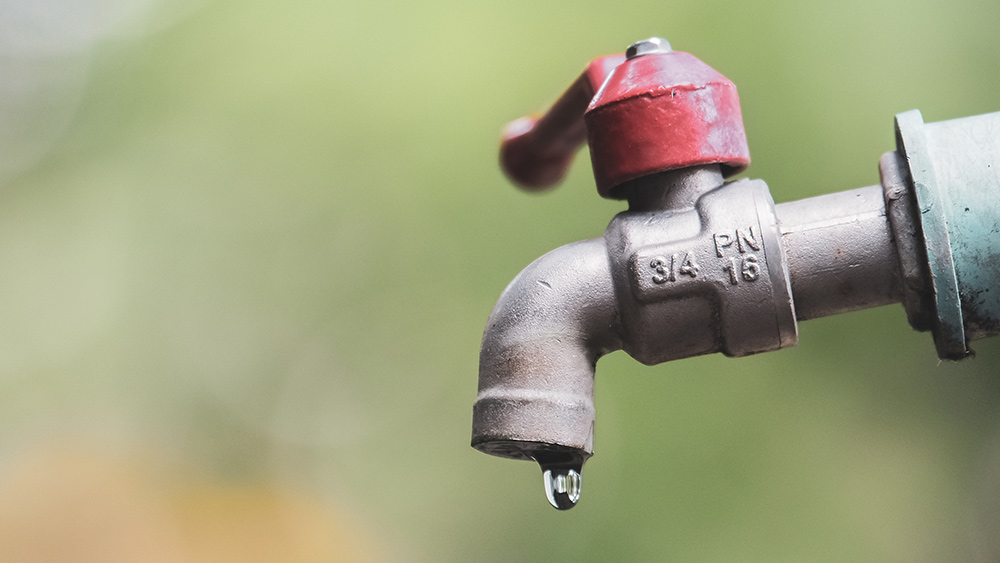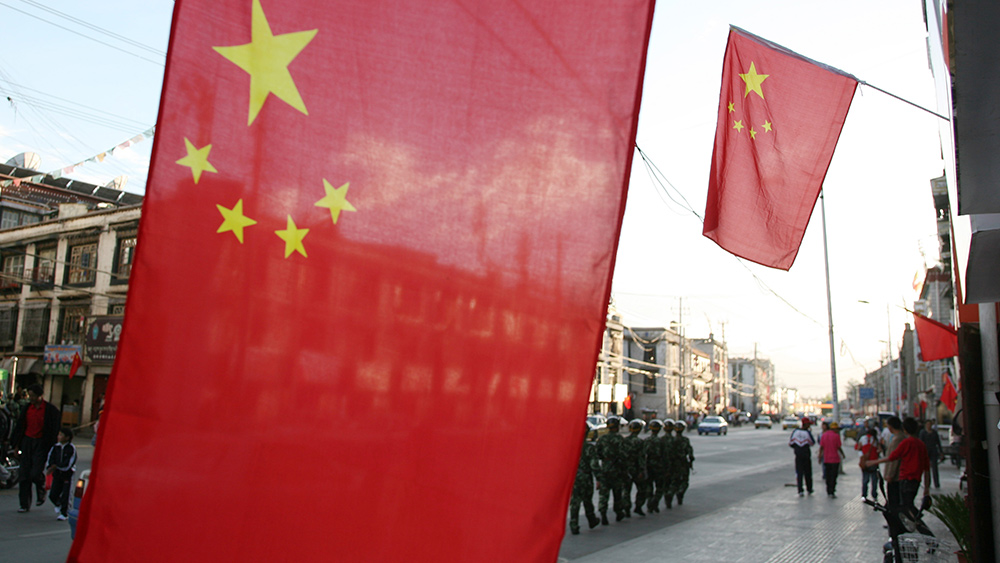Water infrastructure authorities declare DROUGHT EMERGENCY in Southern California
By bellecarter // 2022-12-19
Tweet
Share
Copy

A regional drought emergency has been declared in Southern California as residents brace themselves for a fourth consecutive drought season.
Officials from the Metropolitan Water District (MWD) of Southern California announced that the water-saving call could become mandatory if drought conditions persist in the coming months. According to their site, MWD will consider allocating supplies to all its 26 member agencies by April, which would require them to cut their use of imported water or face steep additional fees on water purchased from the local water agency.
"Since this drought began, we have been steadily increasing our call for conservation. If we don't have an extremely wet winter, we will need to elevate to our highest level – a water supply allocation for all of Southern California," Metropolitan General Manager Adel Hagekhalil said. "Substantial and immediate conservation now and in the coming months will help lessen the potential severity of such an allocation."
MWD member agencies, including the Los Angeles Department of Water and Power, the Municipal Water District of Orange County and the Inland Empire Utilities Agency, will implement voluntary and mandatory conservation measures at the local level based on their particular circumstances. Those with local supplies or other alternative options may be able to rely on them in the meantime.
The MWD board's decision came about eight months after officials declared a similar emergency for seven million people who are dependent on supplies from the northern Sierra via the State Water Project (SWP), a vast network of reservoirs, canals and dams that convey water from Northern California.
Meanwhile, residents depending on the Colorado River, California's other major water supply, had not been included in that emergency declaration.
"Conditions on the Colorado River are growing increasingly dire," MWD Chairwoman Gloria Gray said in a statement. "We simply cannot continue turning to that source to make up the difference in our limited state supplies. In addition, three years of California drought are drawing down our local storage."
The MWD statement also pointed out that outdoor conservation offers a big opportunity for water savings – particularly in the winter – as up to 75 percent of all water used in the area is utilized in irrigating yards and gardens. "Southern Californians are encouraged to reassess the irrigating needs of their lawns and gardens during the winter. Cooler temperatures and wetter weather can dramatically reduce watering needs," the statement included.
The three-year dry season in the Southern California area has resulted in record-low SWP deliveries to the area. SWP-dependent communities have been under the MWD's mandatory Emergency Water Conservation Program, where affected agencies have been living with volumetric limits or have restricted outdoor watering to one day a week. Those mandatory measures are expected to continue through June if substantial rain or snow accumulation doesn't bring any relief to the ongoing drought problem in the state.
Major rivers all over the world are drying up at the same time
Levels of water in rivers all over the globe are reaching record lows in recent years. Analysts are worried about why this is happening all at the same time because the world will collapse without an ample supply of water. The Colorado River has fallen to such historic lows that Lake Mead and Lake Powell, which are America's two largest reservoirs, could reach a "dead pool," or the point at which water no longer passes downstream from a dam. The Mississippi River is also drying up, disrupting boat traffic and recreation and harming water quality in nearby communities. The Yangtze River in China, the longest in Asia, the third-longest in the world and the longest to flow entirely within one country, is also experiencing drought, affecting hydropower, halting shipping and forcing major companies to suspend operations. Moreover, the Indus River, which is a transboundary river of Asia and a trans-Himalayan river of South and Central Asia, has also been drying up and the river has become a dumping ground for pollutants. In Europe, Germany's Rhine River's water level is too low that some vessels cannot sail even when empty. The Amazon River in South America (covering Peru, Colombia and Brazil) is the largest river by discharge volume of water in the world and the disputed longest river system in the world in comparison to the Nile. It is now suffering a fast-decreasing water level due to lower-than-expected rainfall during August and September. Africa's longest river Nile, a symbol of prosperity in Egypt since ancient times, is no longer capable of supporting the needs of a growing population. (Related: Major rivers all around the world experiencing drought at the same time: WHY?) Watch the video below that provides an update on California's drought situation. This video is from the Delacabra channel on Brighteon.com.More related stories:
Nearly a third of Sierra Nevada's conifer forests destroyed by drought, wildfires. Parts of Mississippi River forced to CLOSE due to worsening drought crisis. Tomato shortage looms as drought threatens California's summer crops. Heatwaves and drought threaten autumn crops in China. Texas drought could eclipse drought of 2011, the state's worst on record.Sources include:
News.Yahoo.com LATimes.com MWDH2O.com TheHill.com Gizmodo.com TheGuardian.com NPR.org Reuters.com APNews.com France24.com StrangeSounds.org Brighteon.comTweet
Share
Copy
Tagged Under:
drought collapse environment California disaster big government panic water supply chaos ecology Mississippi River clean water rationing scarcity rivers Colorado River Metropolitan Water District of Southern California regional drought emergency
You Might Also Like
France edges closer to energy rationing as local nuclear plants suffer “issues”
By Ethan Huff // Share
Playing God: Biden administration supports DANGEROUS PLAN to block sun’s rays
By Kevin Hughes // Share
5 Reasons why you need shelter to survive when disaster strikes
By Zoey Sky // Share
Planting cucumbers early can help farmers avoid downy mildew, reveals study
By Zoey Sky // Share
Recent News
Trump administration poised to downgrade federal marijuana restrictions
By willowt // Share
The decade-by-decade guide to slowing time: New science maps nonlinear aging
By willowt // Share











